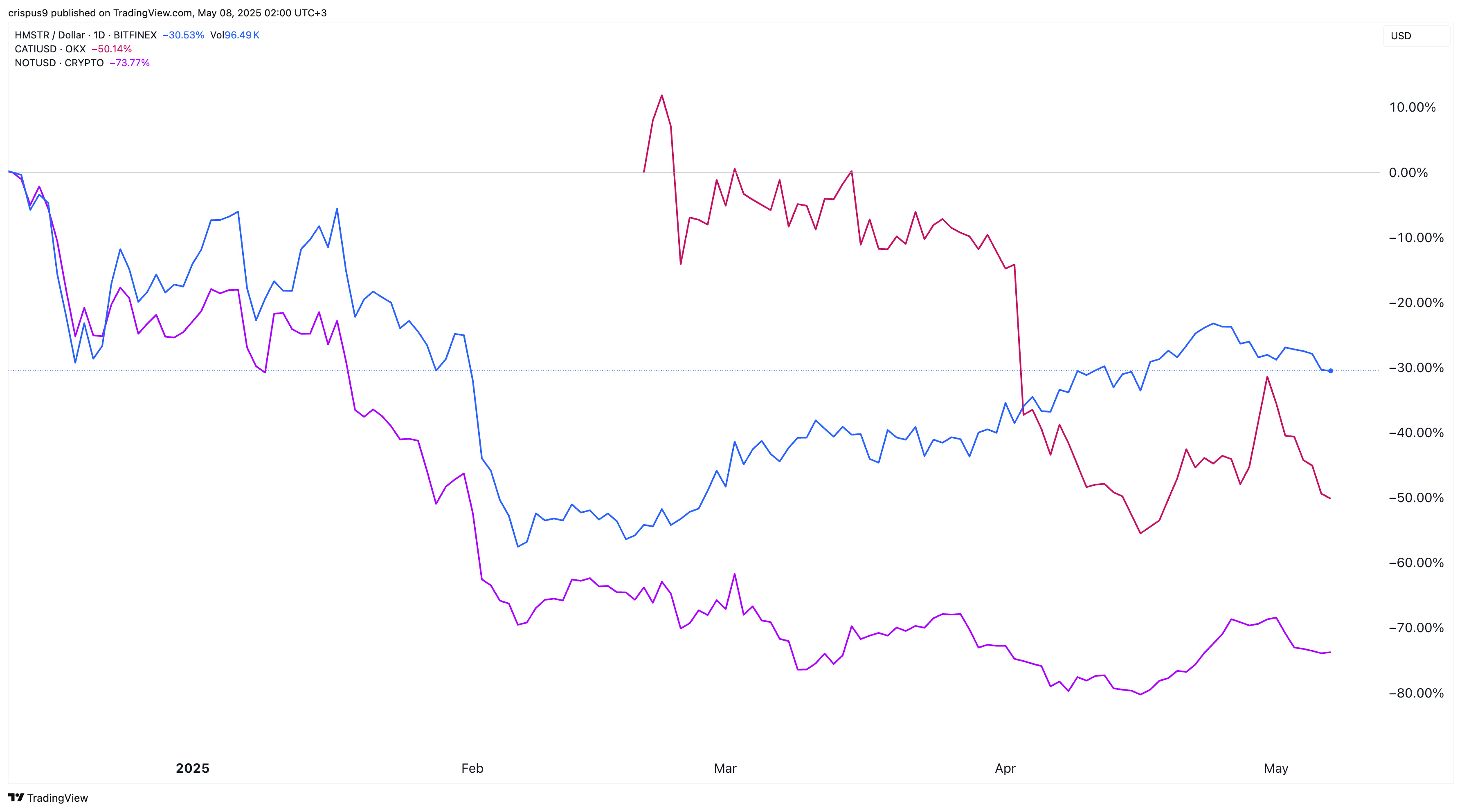Hamster Kombat (HMSTR), Notcoin (NOT), Catizen (CATI), and other Telegram tap-to-earn tokens have crashed since their airdrops, leading to substantial losses among their players and investors.
HMSTR has crashed by 70% since its airdrop. Similarly, Catizen’s price dropped by 93%, and Notcoin’s fell by 80%, valued at $25 million and $224 million, respectively.
There are three main reasons why these Telegram tap-to-earn tokens have crashed after their token generation event (TGE).

Struggles in the “To Earn” Industry
First, they plunged because the crypto industry has struggled to develop a viable “to earn” model, where people earn tokens that they can convert into cash. One challenge is that the developers and the participants have different goals.
In most cases, developers want to create a long-lasting project. That’s why many of them hire teams and spend money on research and development (R&D).
On the other hand, participants are often interested in accumulating as many tokens as possible and then selling them immediately after the token generation event. This is exactly what happened among Telegram tap-to-earn tokens and even Pi Network, which launched its mainnet recently.
A similar pattern occurred with play-to-earn tokens, including Sandbox, Axie Infinity, Gods Unchained, and Illuvium—move-to-earn tokens like STEPN (GMT), Sweat Economy, and Step App (FITFI).
TON Blockchain Challenges
The other main reason why tokens like Hamster Kombat, TapSwap, Notcoin, and Catizen plunged is that they all exist in the TON Blockchain.
An examination of TON’s ecosystem shows it is less active than other popular chains like Solana and Ethereum. For example, Toncoin has a handful of decentralized exchanges, with STON, DeDust, and TONCO being the biggest ones.
The challenge is that many users don’t interact with these platforms. DeFi Llama data shows that DEX protocols handled a volume of just $3.8 million in the last 24 hours, a tiny amount considering that the DEX industry processed over $9.1 billion in assets.
While these tokens are listed in centralized exchanges, having a good presence in the decentralized exchanges is usually good.
Tokenomics and Crypto Market Crash
Hamster Kombat and other tap-to-earn tokens like Catizen and Notcoin crashed because their tokenomics favored insiders. Also, these tokens face huge unlocks over time that will dilute existing holders.
For example, HMSTR has a circulating supply of 64 billion and a total supply of 100 billion, meaning that 36 billion tokens will come online over time. Catizen has 314 million in circulating supply and 1 billion in total supply.
Further, they have dropped because of the recent crypto market crash, where most altcoins dropped by double digits from their 2024 highs. This is hopeful as it signals a potential recovery in the next crypto bull run.










